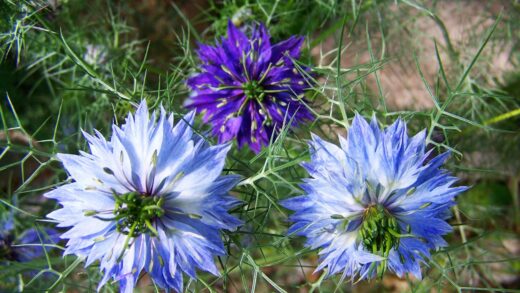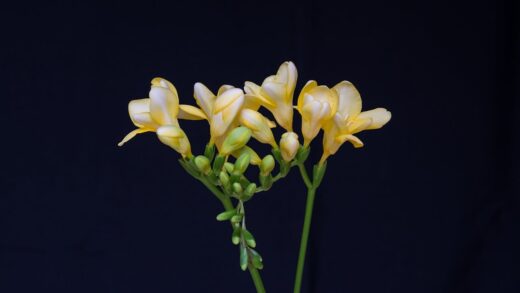Successfully establishing a new patch of lily of the valley begins with a deep understanding of its preferred growing conditions and a methodical approach to planting. This charming perennial spreads via underground rhizomes, and the most common method of planting involves using dormant, bare-root divisions often referred to as “pips.” These pips contain the energy reserves and growth points necessary to sprout into a new plant. Proper timing, meticulous soil preparation, and correct planting depth are the three pillars that support the successful establishment and future vigor of this beloved groundcover. By mastering these initial steps, you create a foundation for a lush colony that will flourish for years to come.
The process is not merely about placing a plant in the ground; it is about creating an environment where it can naturally thrive and spread. This involves replicating the cool, moist, and shaded conditions of its native woodland habitat. The initial effort invested in preparing the planting site pays significant dividends, leading to faster establishment, healthier growth, and a more impressive floral display in the subsequent spring seasons. A well-planted lily of the valley will quickly begin to send out new rhizomes, gradually forming the dense, fragrant carpet it is known for.
Propagation, the process of creating new plants, is remarkably straightforward with lily of the valley, primarily accomplished through division. This method allows gardeners to easily expand their existing colonies or share this delightful plant with others. Understanding when and how to divide the clumps is key to ensuring the health of both the parent plant and the newly created divisions. It is a simple yet effective way to manage the plant’s spread and rejuvenate older, overcrowded patches.
Whether starting with newly purchased pips or dividing a mature clump, the principles of care remain consistent. Attention to detail during the planting and propagation phase directly impacts the plant’s ability to develop a strong root system, which is essential for its long-term survival and performance. This initial stage is a critical investment in the future beauty and fragrance of your garden’s shaded corners.
Optimal timing for planting
The timing of planting is a crucial factor that can significantly influence the success of establishing lily of the valley. The most opportune time to plant the dormant pips is in the late autumn, several weeks before the ground freezes solid. Planting at this time of year allows the rhizomes to settle into the soil and begin some minor root development before winter dormancy fully sets in. This head start enables the plants to emerge more vigorously in the spring.
More articles on this topic
Alternatively, lily of the valley can also be planted in the very early spring, as soon as the soil is workable and the threat of a hard frost has passed. Spring planting allows the pips to start growing almost immediately as the soil temperatures rise. However, plants established in the spring may not produce a significant floral display in their first year, as they will be directing most of their energy into developing a robust root system. The primary goal in the first season is establishment, with a better bloom to be expected the following year.
Regardless of whether you choose an autumn or spring planting window, it is essential to plant the pips as soon as possible after you acquire them. These bare-root divisions can dry out quickly if left exposed to the air for extended periods. If you cannot plant them immediately, store them in a cool, dark place, lightly misted or packed in slightly damp peat moss or sawdust to maintain their viability until you are ready to get them in the ground.
Avoid planting during the heat of summer or in the dead of winter. Summer planting can subject the new plants to extreme heat and drought stress, making establishment very difficult. Winter planting in frozen ground is impractical and can damage the dormant pips. Sticking to the recommended late autumn or early spring windows provides the most favorable conditions for the plants to acclimate and thrive.
Preparing the soil for planting
Thorough soil preparation is perhaps the single most important step in ensuring the long-term health of your lily of the valley patch. These plants thrive in soil that is rich in organic matter, consistently moist, and well-draining. Begin by selecting a planting site that offers partial to full shade, ideally under the canopy of deciduous trees. This location will protect the plants from the harsh afternoon sun during the summer months.
More articles on this topic
Once you have selected the site, the next step is to amend the soil. Lily of the valley performs best in a loose, friable soil structure. If you are working with heavy clay or sandy soil, you will need to make significant improvements. The most effective way to do this is by incorporating a generous amount of organic material, such as well-rotted compost, leaf mould, or aged manure. Spread a layer several inches thick over the planting area and work it into the top six to eight inches of soil with a garden fork or tiller.
This addition of organic matter serves multiple crucial purposes. It improves the structure of heavy clay soil, promoting better drainage and preventing the rhizomes from sitting in waterlogged conditions which can lead to rot. In sandy soils, it acts like a sponge, helping to retain moisture and nutrients that would otherwise drain away too quickly. Furthermore, this organic material provides a slow and steady release of essential nutrients, feeding the plants as they grow.
Finally, before planting, ensure the entire bed is free of weeds and any large rocks or debris. Rake the surface smooth to create a fine, even tilth. It is also beneficial to water the prepared bed thoroughly a day or two before planting. This ensures that the soil is evenly moist, creating a hospitable environment for the newly planted pips and helping them to settle in more quickly after planting.
The process of planting pips
Planting lily of the valley pips is a simple and straightforward process once the soil has been properly prepared. The pips, which are the plant’s dormant rhizome divisions, should be inspected before planting. They should feel firm and have visible root structures and at least one pointed growth bud. It is helpful to soak the pips in lukewarm water for an hour or two before planting to rehydrate them, which can encourage faster sprouting.
When you are ready to plant, create individual planting holes or a shallow trench for multiple pips. The critical factor is planting depth; the top of the pip, where the pointed bud emerges, should be positioned just below the soil surface, typically about one to two inches deep. Planting them too deeply can hinder their emergence in the spring, while planting too shallowly can expose them to drying out or frost damage.
Space the individual pips about four to six inches apart from each other. While this may seem sparse initially, it is important to remember that lily of the valley is a spreading groundcover. This spacing gives each plant adequate room to establish a strong root system and begin sending out new rhizomes to fill in the area. Within a few years, they will form a dense and continuous carpet of foliage.
After placing the pips in their holes at the correct depth and spacing, carefully backfill the holes with the prepared soil, gently firming it down around the pips to eliminate any large air pockets. Once all the pips are planted, water the entire area thoroughly but gently. This initial watering helps to settle the soil around the rhizomes and provides the moisture needed to kickstart their growth process.
Propagation through division
Propagation of lily of the valley is most effectively and commonly done through division of its rhizomatous root system. This method is not only a way to create new plants for other parts of the garden but also a necessary maintenance task to rejuvenate older, overcrowded clumps. An overgrown patch can suffer from reduced flowering and poor air circulation, making it more susceptible to disease. The best time to divide the plants is in the late autumn after the foliage has died back.
To begin the process of division, carefully lift a section of the clump out of the ground using a spade or garden fork. Try to dig widely around the section you intend to lift to minimize damage to the interconnected network of rhizomes. Once you have the clump out of the soil, gently shake off the excess dirt so that you can clearly see the rhizomes and the individual pips or growth buds.
Using your hands or a sharp, clean knife, carefully separate the mass of rhizomes into smaller sections. Each new division should have at least one healthy pip (growth bud) and a good portion of attached roots. Discard any parts of the rhizome that appear soft, mushy, or diseased. It is better to create several strong, healthy divisions rather than many weak ones.
The newly created divisions should be replanted immediately to prevent them from drying out. Plant them in a new, well-prepared bed or use them to fill in sparse areas in the existing patch, following the same planting guidelines for depth and spacing as you would for new pips. Water them in thoroughly after planting to help them settle into their new location. This process, repeated every few years, will ensure your lily of the valley remains vigorous and productive.
Post-planting and establishment care
Once your new lily of the valley pips are in the ground, providing consistent care during their first year is crucial for successful establishment. The most important task is to maintain consistent soil moisture. The soil should never be allowed to completely dry out, especially during the first few months after planting. Water the area deeply whenever the top inch of soil feels dry to the touch, ensuring the moisture penetrates down to the root zone.
In addition to watering, applying a layer of organic mulch over the newly planted area is highly beneficial. A one to two-inch layer of shredded leaves, pine straw, or fine bark chips will help to conserve soil moisture by reducing evaporation. This mulch layer also works to suppress weed growth, which is important as the new plants will be competing for water and nutrients. Furthermore, the mulch helps to regulate soil temperature, protecting the new rhizomes from extreme fluctuations.
During the first growing season, be patient with your new plants. Lily of the valley dedicates a significant amount of energy to establishing a robust root and rhizome system in its first year. As a result, you may see limited top growth and few, if any, flowers. This is a completely normal part of the establishment process. The priority is for the plant to build a strong foundation underground, which will support vigorous growth and prolific flowering in the years to come.
Monitor the new planting for any signs of stress, such as pests or diseases, although these are generally uncommon with lily of the valley. Keep the area clean and free of debris to promote good air circulation. By providing this attentive care during the crucial first year, you ensure that your new colony of lily of the valley gets the best possible start, setting the stage for a beautiful and enduring groundcover.


















